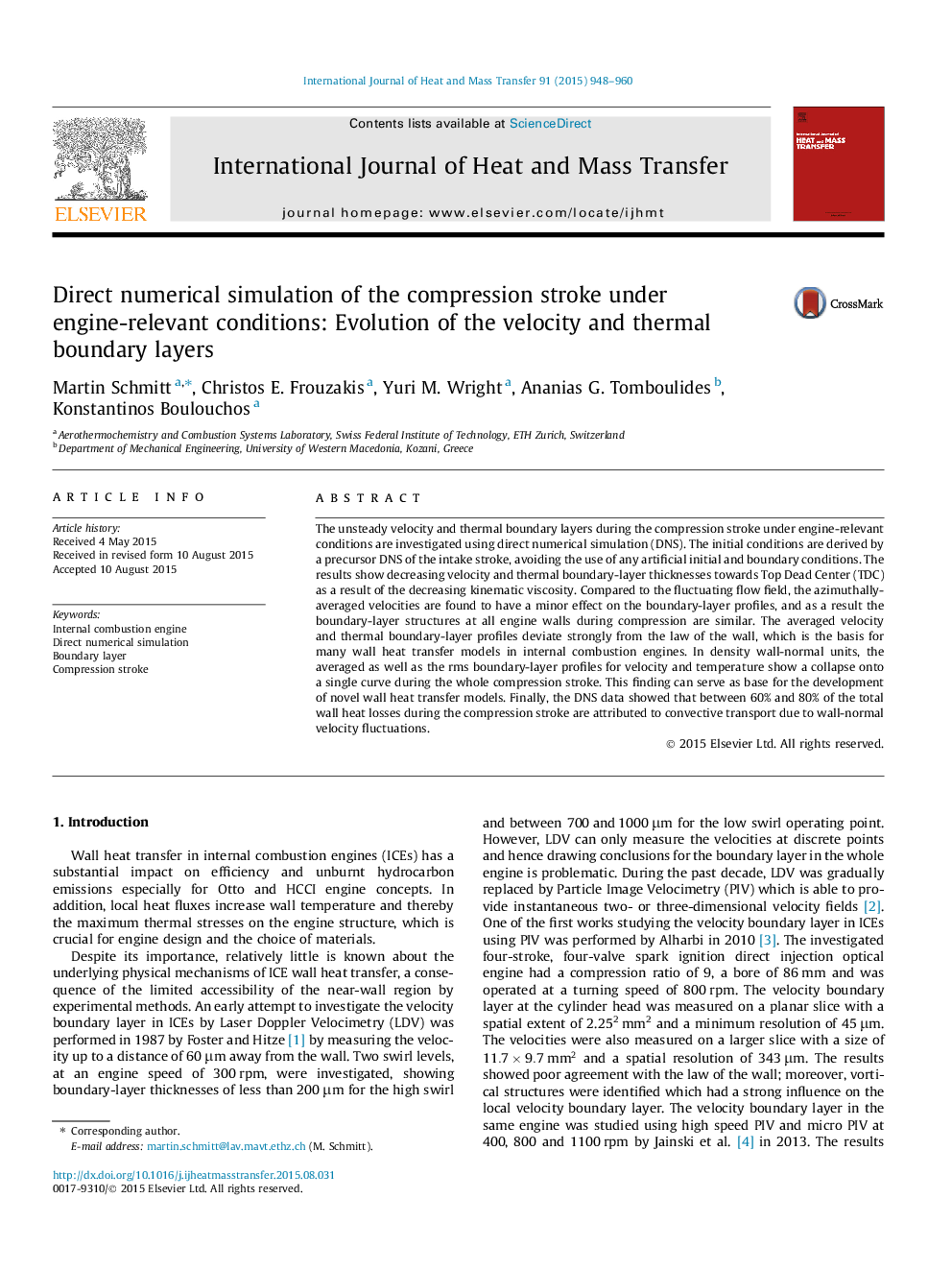| کد مقاله | کد نشریه | سال انتشار | مقاله انگلیسی | نسخه تمام متن |
|---|---|---|---|---|
| 7056460 | 1458051 | 2015 | 13 صفحه PDF | دانلود رایگان |
عنوان انگلیسی مقاله ISI
Direct numerical simulation of the compression stroke under engine-relevant conditions: Evolution of the velocity and thermal boundary layers
ترجمه فارسی عنوان
شبیه سازی عددی مستقیم سکته فشرده در شرایط مرتبط با موتور: تکامل سرعت های لایه مرزی حرارتی
دانلود مقاله + سفارش ترجمه
دانلود مقاله ISI انگلیسی
رایگان برای ایرانیان
کلمات کلیدی
موتور احتراق داخلی، شبیه سازی مستقیم عددی، لایه مرزی، سکته مغزی
موضوعات مرتبط
مهندسی و علوم پایه
مهندسی شیمی
جریان سیال و فرایندهای انتقال
چکیده انگلیسی
The unsteady velocity and thermal boundary layers during the compression stroke under engine-relevant conditions are investigated using direct numerical simulation (DNS). The initial conditions are derived by a precursor DNS of the intake stroke, avoiding the use of any artificial initial and boundary conditions. The results show decreasing velocity and thermal boundary-layer thicknesses towards Top Dead Center (TDC) as a result of the decreasing kinematic viscosity. Compared to the fluctuating flow field, the azimuthally-averaged velocities are found to have a minor effect on the boundary-layer profiles, and as a result the boundary-layer structures at all engine walls during compression are similar. The averaged velocity and thermal boundary-layer profiles deviate strongly from the law of the wall, which is the basis for many wall heat transfer models in internal combustion engines. In density wall-normal units, the averaged as well as the rms boundary-layer profiles for velocity and temperature show a collapse onto a single curve during the whole compression stroke. This finding can serve as base for the development of novel wall heat transfer models. Finally, the DNS data showed that between 60% and 80% of the total wall heat losses during the compression stroke are attributed to convective transport due to wall-normal velocity fluctuations.
ناشر
Database: Elsevier - ScienceDirect (ساینس دایرکت)
Journal: International Journal of Heat and Mass Transfer - Volume 91, December 2015, Pages 948-960
Journal: International Journal of Heat and Mass Transfer - Volume 91, December 2015, Pages 948-960
نویسندگان
Martin Schmitt, Christos E. Frouzakis, Yuri M. Wright, Ananias G. Tomboulides, Konstantinos Boulouchos,
